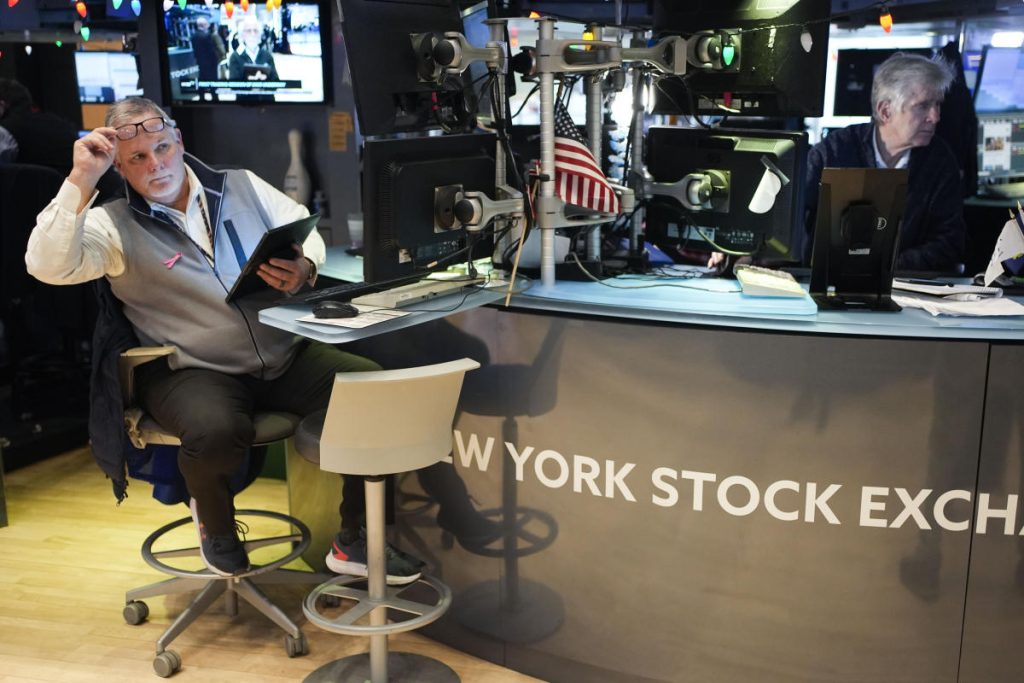
NEW YORK (AP) — The S&P 500 may be heading for its first gain since Christmas on Friday.
The main gauge of Wall Street’s health rose 0.6% in morning trading and was on track to break a five-day losing streak, its longest since April. The Dow Jones Industrial Average was up 153 points, or 0.4%, as of 10:15 a.m. Eastern time, and the Nasdaq composite was 0.9% higher.
Nvidia helped drive the market higher, despite criticism that prices for it and other tech companies have vaulted too high in the frenzy around artificial-intelligence technology. Nvidia rose 3.9% and was the strongest force pushing the S&P 500 upward.
“While the easy gains in AI may be behind us, we think this rally looks far from over,” according to Solita Marcelli, chief investment officer, Americas, at UBS Global Wealth Management.
Another influential Big Tech stock, Tesla, rose 1.6% to recover some of its 6.1% tumble from the day before, when it disclosed it delivered fewer electric vehicles in the last three months of 2024 than analysts expected.
Rival Rivian jumped 16.1% after saying it delivered more than 14,000 vehicles during the last three months of 2024. That was more than analysts expected.
On the losing end of Wall Street was U.S. Steel, which fell 6.4% after President Joe Biden blocked a nearly $15 billion deal proposed by Japan’s Nippon Steel to buy its Pittsburgh-based rival.
Beer, wine and liquor companies sank after U.S. Surgeon General Vivek Murthy warned about the direct link between alcohol consumption and increased cancer risk. He called for an update on the health warning label on alcoholic drinks, as well as for a reassessment of guidelines for alcohol consumption to account for cancer risk.
Molson Coors Beverage fell 2.5%. Constellation Brands, which sells Modelo beer and Robert Mondavi wine, dropped 1.2%.
Wall Street’s pullback over the last week has dimmed its shine by only a bit following two stellar years for U.S. stock indexes. They’ve vaulted to records after the U.S. economy managed to keep growing despite high interest rates that have helped bring high inflation nearly all the way down to the Federal Reserve’s 2% target.
But even though the economy and job market look to remain remarkably solid at the moment, the path ahead is not assured. Part of the reason the S&P 500 set more than 50 all-time highs last year was because of the expectation that the Fed would keep cutting interest rates through 2025 after beginning to ease the pressure on the economy in September.
But traders are ratcheting back expectations for coming cuts. Inflation is proving to be stubborn as the Fed tries to wring the last percentage point of improvement for its 2% inflation goal. Worries are also rising that tariffs and other policies coming from President-elect Donald Trump could put further upward pressure on inflation. All the while, critics also say U.S. stock prices simply look too expensive after rising so much faster than corporate profits.